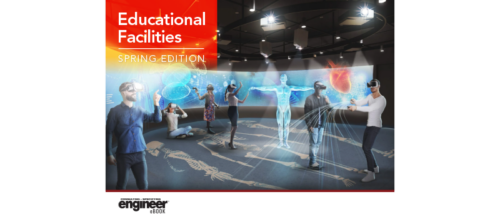Finding comfort in early childhood classrooms: consider radiant floor heating
Radiant floor heating systems have progressed in their longevity and reliability
Student Comfort in Early Childhood Classrooms
Child engagement in academics is an important building block for long-term student success in K-12 schools. With the myriad of distractions in today’s world, student comfort should not be one of them. Poor temperature regulation and air circulation can certainly be one of those distractions and a hindrance to both educators and students, therefore establishing and maintaining proper thermal comfort in learning environments, especially when it comes to early childhood and elementary school settings, is of the utmost importance.
A large part of Pre-K and Kindergarten class time involves sitting, learning, and playing on the floor. From story time on the multi-colored carpet to self-guided learning, this is a time for kids to interact, pull things apart, rebuild, and explore their surroundings. Creating an environment that is comfortable enables students to focus on the task at hand. One proven solution for creating the right thermal environment, is by incorporating a hot water radiant floor heating system.
Exterior Thermal Loss Considerations
A hot water radiant floor system can provide a more welcoming surface temperature for students that spend much of their time on the floor. That is just one reason why radiant heating systems have become synonymous with a higher level of occupant. It can also help address exterior thermal loss.
An unheated exterior wall, especially down low near the floor slab, can become a point of high thermal envelope loss, which can create a drafty environment. For students that spend a lot of time on the floor, this can certainly lead to uncomfortable situations. Airside heating systems combat exterior thermal loss by moving warm air down across the wall surface, which can also lead to a drafty environment.
Hot water finned tube radiation or hot water radiant wall panels are a step in the right direction to treat exterior wall loss. However, for smaller children they do come with some concerns. For children who are spending time on the floor at school or in early childhood centers, sharp edges or the fins on the finned tube can create potential dangers as can hot to the touch surfaces if not properly considered and designed. These are important considerations when planning learning spaces for young children.
Radiant Floor Design Considerations
This system typically consists of a series of cross-linked polyethylene (PEX) tubing laid out during the installation of the floor slab and can provide a comfortable temperature at the floor.
Hot water heating piping serves a PEX tubing header system, which feeds each individual circuit of PEX tubing within the floor slab. Slab temperature sensors and associated control valves limit the surface temperature to around 85 deg F. Studies show warmer slab temperatures can produce a feeling of being too warm. This slab temperature is maintained with a lower water temperature (around 100-110 deg F) and may require mixing valves/circulation pumps depending on what temperature the building’s hot water heating system utilizes. Because of the required lower water temperatures, this system pairs very well with high efficiency condensing boilers.
Initial Cost versus Benefit Considerations
Occupant comfort versus initial cost is sometimes difficult to quantify. While initial installation costs can more easily be identified, putting a corresponding “value” to thermal comfort is much more difficult. Unfortunately, perimeter heating systems are usually a target of “value engineering” when projects are looking to cut costs. This is typically a short term-based decision, which can produce less than desired long-term occupant comfort.
If a project plans to incorporate some type of perimeter heating and required controls, radiant floor system equipment is relatively inexpensive when compared other system components. The PEX tubing and associated manifold costs are comparable to more standard perimeter heating devices such as finned tube radiation or radiant wall panels. It becomes less of a cost conversation, and more of a sequence of construction item when pouring the new concrete slabs.
While not new technology, radiant floor heating systems have progressed in their longevity and reliability with improvements in PEX piping products. With installation being much more feasible in new construction, the application of hot water radiant floor heating systems is something that should be considered in all new Pre-K and Kindergarten construction.
This article originally appeared on Peter Basso Associates’ website. Peter Basso Associates is a content partner of CFE Media.
Original content can be found at blog.peterbassoassociates.com.
Do you have experience and expertise with the topics mentioned in this content? You should consider contributing to our CFE Media editorial team and getting the recognition you and your company deserve. Click here to start this process.


